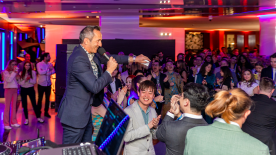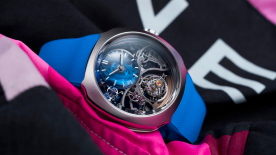The disruption that has roiled the globe in the first half of 2020 may not have come to an end. Social distancing, increased personal sanitation practices and telecommuting will probably continue to be a part of our lives for a while. We are, however, just beginning to come to terms with this thing, and starting to think about how a post-COVID world will look.
This is particularly relevant to us at WorldTempus. How will we proceed during this newly germaphobic time, in the field of luxury watchmaking, where every important value is transmitted through the feel of an object? People used to think that the phrase “digital luxury” was a paradox, an oxymoron that can only exist under tenuous conditions. How can luxury — traditional, lasting, detail-oriented — exist in a context that emphasises modernity, speed and instant impact?
Nothing will replace the experience of physically touching and discovering a watch, putting it on your wrist, seeing how it feels and looks on you — but digital channels aren’t here to replace that. Digital channels are the best answer we have to a young audience that many (if not most) watchmaking brands have struggled to effectively reach.
Two weeks ago, I had the chance to speak with the Director of Style and Heritage at Vacheron Constantin, Christian Selmoni. Apart from the initial adjustment of talking to people via laptop screens and unfamiliar software, he observed that he had never found it easier or more pleasant to share the values and messages of the brand. Such sharing sessions would have, in the past, mostly been conducted via exclusive dinners that involved all sorts of complicated logistics — flights, accommodation, local transport, guest list, venue, an endless array of checklists and variables. Now, you key in a security passcode and you’re seconds away from a truly rewarding and informative discussion. Apparently these discussions are even more qualitative than they used to be — and why not? You’re in the comfort of your own home.
A few days ago, Marc André Deschoux (of our video partner TheWatchesTV) and myself had a few words with Julien Tornare, CEO of Zenith, before we sat down to film an interview and presentation of new timepieces. His experience of online sessions with the watch community paralleled the observations of Christian Selmoni, even as he expressed his hopes for the possibility of a return to more face-to-face interactions in the coming months. The thing is, even if physical meetings and interactions become possible again, that shouldn’t cancel out the advantages and new digital competencies that we’ve all gained during this time. Right now, online spaces may not yet be that great at showcasing luxury timepieces. But it’s not about product; it’s about consumers.
As recently as last year, some watchmaking brands were still holding out against expanding into digital channels, in a blanket approach that ranged from sales to communications, based on the objection that luxury values were not compatible with the instant-gratification, ephemeral nature of online interactions. Based on the latest published results of the Richemont group, however, online sales are already being identified as a key growth factor. As technology evolves and digital platforms become more sophisticated, we can only expect online sales to increase.
Digital luxury is not a paradox at all. The digital element is the missing part of the formula that will finally allow luxury brands to engage with their audiences the way they’ve always wanted to.
As an online watch writer, I try to stay updated on the latest news in three areas: technology, horology and literature. The latest literary phenomenon to capture imaginations all over the world is “The Great Realisation” — a poem set in an undisclosed future time, that tells the story of how humanity learned from the pandemic and created a more caring and empathetic society. “The Great Realisation” — which has tens of millions of YouTube views and has been translated into multiple languages since it was first released on 29 April — is cleverly framed as a bedtime story, to highlight to young minds the disconnect between our current, imperfect time and a potentially brighter future. In watchmaking too, we are having a few great realisations of our own. What future will these realisations bring?





